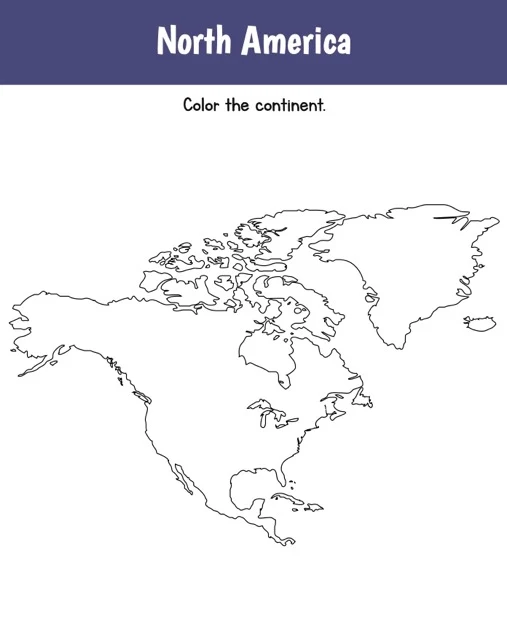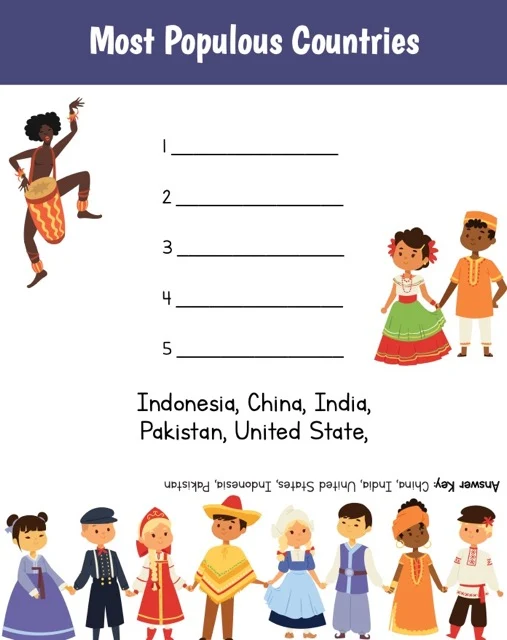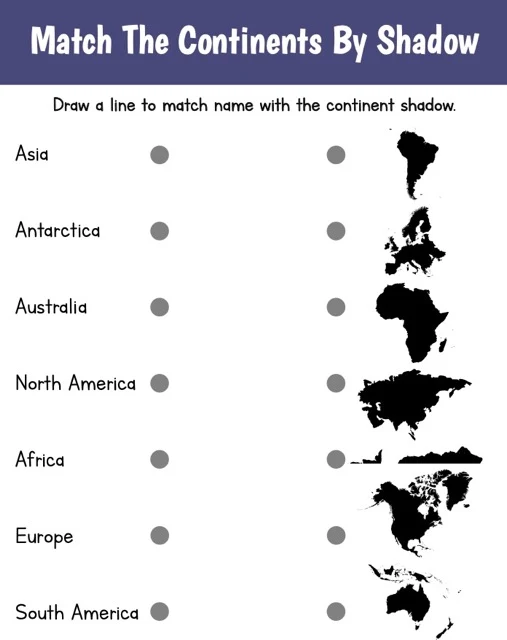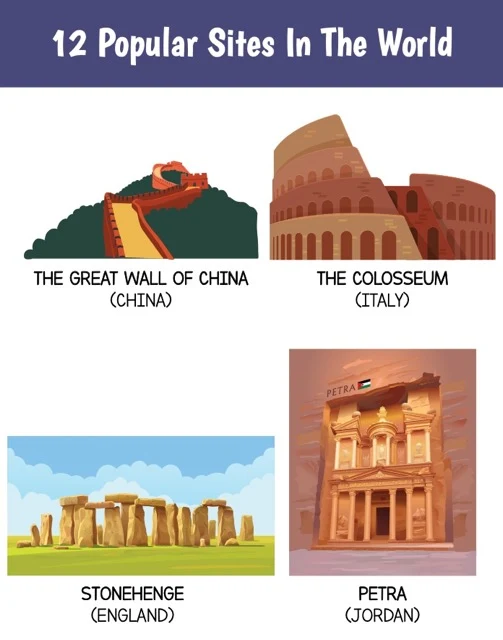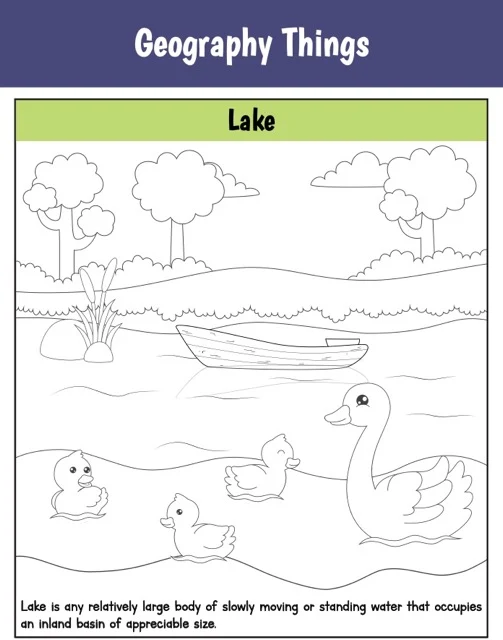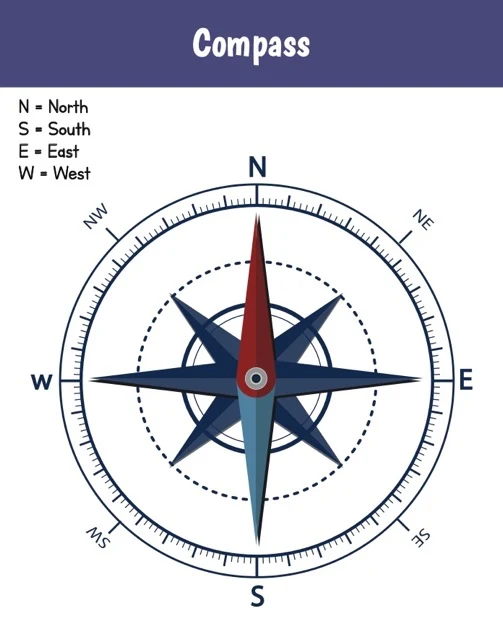Fundamentals of Geography
This document synthesizes information from three sources to provide a foundational overview of geography. It covers core concepts like cardinal directions and continents, significant landforms, population distribution, and essential tools like maps and compasses. Furthermore, it addresses the influence of geography on culture, human impact on the environment, and the implications of globalization. The text emphasizes key definitions and examples, drawing directly from the original sources to present a concise summary of geographical themes
Geography: Key Themes and Concepts
Geography Briefing Document: A Review of Key Themes and Concepts
This briefing document summarizes key geographical themes and concepts extracted from three sources: "Geography FAQ," "Geography Quiz and Essay Review," and "Testing Theme: Geography.pdf." The document highlights essential facts, definitions, and significant geographical features, drawing directly from the provided materials.
I. Fundamental Geographical Concepts
●
Definition of Geography: "Geography is the study of the Earth and its features, including the distribution of life, landforms, and climates. It also encompasses the study of how humans interact with and impact their environments." ("Geography FAQ")
●
Cardinal Directions: The four primary directions are North, South, East, and West, providing "a universal frame of reference for location and navigation." ("Geography Quiz and Essay Review")
●
Continents: The Earth comprises seven major landmasses: Africa, Antarctica, Asia, Australia, Europe, North America, and South America. ("Geography FAQ")
●
Oceans: The four major oceans are the Atlantic, Pacific, Indian, and Arctic. The Pacific Ocean is the largest by area. ("Geography FAQ," "Geography Quiz and Essay Review")
II. Significant Landforms and Features
●
Islands: Defined as "a piece of land completely surrounded by water," examples include Hawaii. ("Geography FAQ," "Geography Quiz and Essay Review")
●
Peninsulas: Land masses surrounded by water on three sides, with Florida serving as an example. ("Geography FAQ," "Geography Quiz and Essay Review")
●
Plains: Expansive, flat land areas with limited tree cover, exemplified by the Great Plains of North America. ("Geography FAQ," "Geography Quiz and Essay Review")
●
Mountains and Hills: Mountains are significantly taller and steeper than hills, often formed by tectonic processes. ("Geography Quiz and Essay Review")
●
Volcanoes: Described as "an opening in the Earth's crust where molten rock, gases, and ash erupt," often forming conical shapes. ("Testing Theme: Geography.pdf")
III. Population and Demographics
●
Most Populated Country: China holds the title of the most populated country globally, with over 1.4 billion inhabitants, situated in East Asia. ("Geography FAQ," "Geography Quiz and Essay Review")
●
Population Distribution: Visual aids in "Testing Theme: Geography.pdf" illustrate global population distribution, highlighting variations in density across continents.
IV. Tools and Techniques in Geography
●
Compasses: Utilized to determine direction, employing a magnetic needle aligning with the Earth's magnetic field to indicate North, South, East, and West. ("Geography Quiz and Essay Review," "Testing Theme: Geography.pdf")
●
Maps: Various maps and diagrams within "Testing Theme: Geography.pdf" visually represent continents, landmarks, population data, and geographical features.
V. Broader Themes and Applications
●
Cultural Influence: Geography plays a pivotal role in shaping cultures and societies, impacting lifestyles, traditions, and development. ("Geography Quiz and Essay Review")
●
Human Impact on the Environment: Human activities, including deforestation, pollution, and climate change, exert significant influence on the Earth's physical environment, demanding attention and mitigation strategies. ("Geography Quiz and Essay Review")
●
Globalization: Understanding globalization's geographical implications, both positive and negative, is crucial in comprehending interconnectedness and the flow of goods, people, and ideas. ("Geography Quiz and Essay Review")
This briefing document provides a concise overview of central geographical themes and concepts based on the provided sources. Further exploration of these topics can delve into more specific geographical regions, environmental processes, and the complex interplay between human societies and the natural world.
Geography FAQ
Geography FAQ
What are the seven continents?
The seven continents are:
●
Africa
●
Antarctica
●
Asia
●
Australia
●
Europe
●
North America
●
South America
What are the four major oceans?
The four major oceans are:
●
Atlantic
●
Pacific
●
Indian
●
Arctic
What is the most populated country?
The most populated country in the world is China.
What is geography?
Geography is the study of the Earth and its features, including the distribution of life, landforms, and climates. It also encompasses the study of how humans interact with and impact their environments.
What is an island?
An island is a piece of land completely surrounded by water.
What is a peninsula?
A peninsula is a piece of land surrounded by water on three sides.
What is a plain?
A plain is a large area of flat land with few trees.
What are the four cardinal directions?
The four cardinal directions are:
●
North
●
South
●
East
●
West
Geography Quiz and Essay Review
Geography Review
Quiz
Instructions: Answer the following questions in 2-3 sentences.
1.
What is the difference between an island and a peninsula?
2.
What are the four cardinal directions? Why are they important in geography?
3.
What is the most populated country in the world? Where is this country located?
4.
What are the four major oceans? Which is the largest and covers the most area?
5.
Name three continents and provide a unique characteristic for each.
6.
What is the definition of a plain? Give an example of a famous plain.
7.
What is geography and why is it important to study?
8.
What are three key elements of physical geography?
9.
Briefly describe the difference between a hill and a mountain.
10.
What tool is used to help determine direction? What are its main components?
Answer Key
1.
An island is a piece of land entirely surrounded by water, while a peninsula is a piece of land surrounded by water on three sides. An example of an island is Hawaii, and an example of a peninsula is Florida.
2.
The four cardinal directions are North, South, East, and West. They are important in geography because they provide a universal frame of reference for location and navigation.
3.
The most populated country in the world is China, with over 1.4 billion people. It is located in East Asia.
4.
The four major oceans are the Atlantic, Pacific, Indian, and Arctic. The Pacific Ocean is the largest and covers the most area.
○
Africa: Known for its diverse wildlife and the Sahara Desert.
○
Europe: Home to many historical landmarks and a variety of cultures.
○
North America: Features vast mountain ranges like the Rockies and the Appalachian Mountains.
5.
A plain is a large area of flat land with few trees. An example is the Great Plains in North America.
6.
Geography is the study of the Earth and its features, including the distribution of life, landforms, and climates. It is important to study because it helps us understand our planet, its resources, and how humans interact with their environment.
7.
Three key elements of physical geography are landforms, climate, and water bodies.
8.
A hill is a raised area of land that is smaller and less steep than a mountain. Mountains are much higher and steeper, often formed by tectonic activity.
9.
A compass is used to help determine direction. Its main components are a magnetic needle that aligns with the Earth's magnetic field, a compass housing, and a directional dial indicating North, South, East, and West.
Essay Questions
1.
Explain how geography influences the development of cultures and societies. Provide specific examples to support your argument.
2.
Discuss the impact of human activities on the Earth's physical environment. Consider topics like deforestation, pollution, and climate change.
3.
Analyze the importance of understanding different map projections and their strengths and weaknesses in representing the Earth's surface.
4.
Compare and contrast the characteristics of two different biomes (e.g., rainforest and desert), highlighting the factors that contribute to their unique features.
5.
Explain the concept of globalization and discuss its geographic implications, both positive and negative.
Glossary of Key Terms
●
Cardinal Directions: The four main directions on a compass: North, South, East, and West.
●
Continent: One of the seven large landmasses on Earth: Africa, Antarctica, Asia, Australia, Europe, North America, and South America.
●
Geography: The study of the Earth's physical features, climate, populations, and resources, as well as the interaction between humans and their environment.
●
Island: A piece of land completely surrounded by water.
●
Ocean: A vast body of salt water that covers a significant portion of the Earth's surface. There are five major oceans: the Atlantic, Pacific, Indian, Arctic, and Southern Oceans.
●
Peninsula: A piece of land that is surrounded by water on three sides.
●
Plain: A large area of flat land with few trees.
●
Population Density: The number of people living in a specific area, often measured per square kilometer or square mile.
●
Physical Geography: The branch of geography concerned with natural features and processes, such as landforms, climate, and vegetation.
●
Human Geography: The branch of geography that focuses on human activity, culture, society, and their relationship with the environment.





